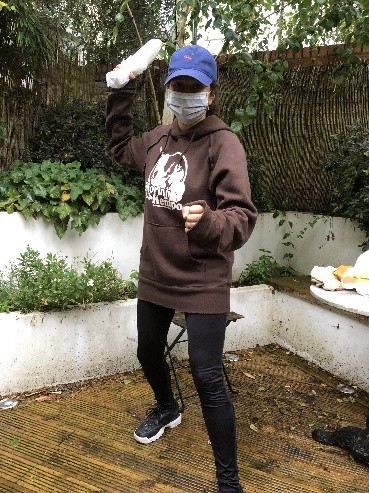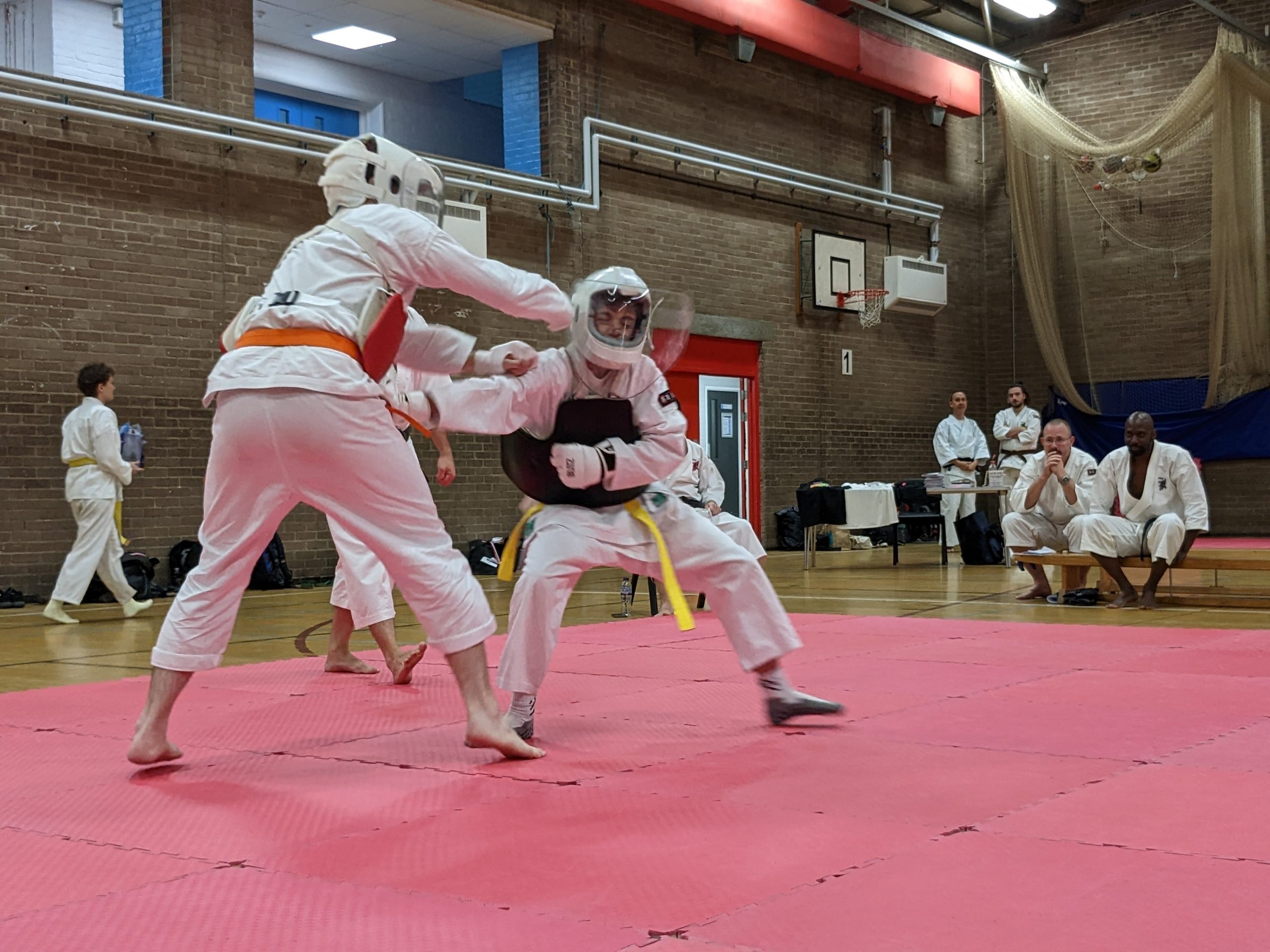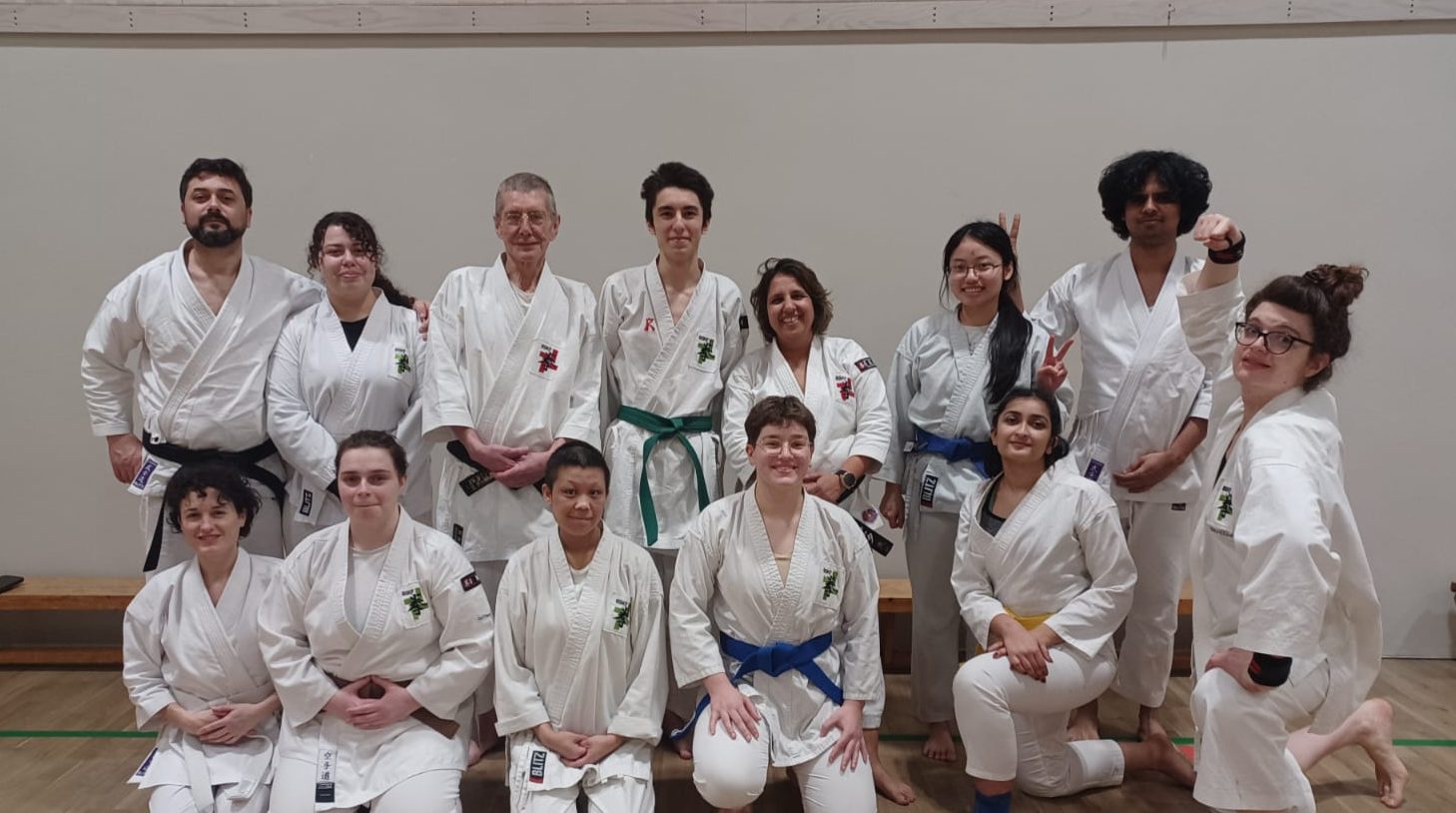Randori (乱取り) – Sparring with Purpose!
Randori isn’t just about throwing punches and kicks—it’s about sharpening your mind, body, and spirit while testing your skills in real-time action. Unlike rigid competitive sparring, randori for us is a dynamic training method that emphasises growth, adaptability, and self-improvement over just winning.
Training with Us
Want more time to sharpen your sparring skills? Or do you need to get ready for your next grading, where you are expected to have enough energy to complete a bout of randori at the end of the exam? Camden Shorinji Kempo offers exclusive randori sessions for members. These classes are not available for new people. The sessions provide extra time to refine techniques, get personalised feedback, and deepen your understanding of sparring. We use a range of techniques outlined on this page.
You are also able to extend your practice after each class at Holborn House – just find a willing partner and our insured instructors will support you.
Types of Training – Sparring with Purpose!
Genti Randori (限定乱取り) – Limited Randori
This is the most traditional of the ways in which we train. The conditions of the interaction or techniques are set beforehand. Training might focus only on throws (nage-waza), single punches, or specific defensive techniques, helping us refine precision within a controlled framework.
Juho Randori (柔法乱取り)
This focuses on soft techniques, including escapes, locks, and throws against grabs and holds. Unlike striking-based sparring, Juho Randori emphasises leverage, redirection, and fluid movement, allowing Kenshi to neutralise an opponent’s strength with technique rather than force.
Goho Randori (剛法乱取り)
This is sparring with just the hard techniques of Shorinji Kempo, incorporating strikes, blocks, and counters. Goho Randori allows Kenshi to develop timing, distance control (ma’ai), and defensive awareness, ensuring they can apply their techniques effectively in dynamic exchanges.
Irikumi (入組) – Controlled Chaos!
Highlighted in the book When Buddhists Attack by Jeffery K Mann, irikumi in Shorinji Kempo can been seen as structured sparring with protective gear, focusing on controlled technique, balance, and distance control (maai – 間合い). It helps Kenshi develop precision and timing, preparing them for real-world application without compromising safety.
Jigeiko (地稽古) – The Free Flow!
Inspired by Kendo and the book When Buddhists Attack by Jeffery K Mann, jigeiko is free-form sparring where Kenshi experiment, adapt, and refine their techniques in fluid exchanges. There’s no rigid scoring system—just the raw challenge of applying principles in a spontaneous bout.
Yakusoku Kumite (約束組手) – Prearranged Precision!
Yakusoku Kumite, meaning “promise pair form”, is a structured drill where the attacker and defender follow a set sequence of movements. This approach allows us to refine our techniques, reactions, and timing in a controlled environment before progressing to free sparring.
Kakie (掛け手) – The Art of Close-Range Control!
Kakie is a defined in Goju-ryu Karate training method that focuses on close-range grappling, sensitivity, and balance disruption. Unlike point-based sparring, kakie is about feeling and responding to an opponent’s movements, developing instinctive reactions for self-defence. This is the way that Sensei Kavita and Sensei Ofelia like to train in combination with one of the approaches above and results in a lot of fun.
Sport vs Self-Defence vs Budo
Martial arts can serve different purposes, and it’s important to understand the distinctions:
Sport – Competitive sparring with rules, points, and structured matches. The fun.
Self-Defence – Practical techniques for real-world situations, focusing on survival and escape.
Budo (武道) – The martial way, emphasising growth, discipline, and philosophy beyond just fighting. The serious side.
At Camden Shorinji Kempo, we respect all approaches—whether you’re here for fitness, self-defence, competition, or personal development. Everyone trains for different reasons, and every Kenshi is on their own journey. Some want to push their limits, others seek confidence, and some simply enjoy the art. Respect each other’s goals, train with an open mind, and support your fellow Kenshi—because martial arts is about growth, not ego.
Tournaments
For those looking to take their skills to the next level, we can support your journey at tournaments, testing ourselves in competitive environments while embodying the spirit of learning and growth. Keep an eye on the list of upcoming events from our Federation the BSKF.
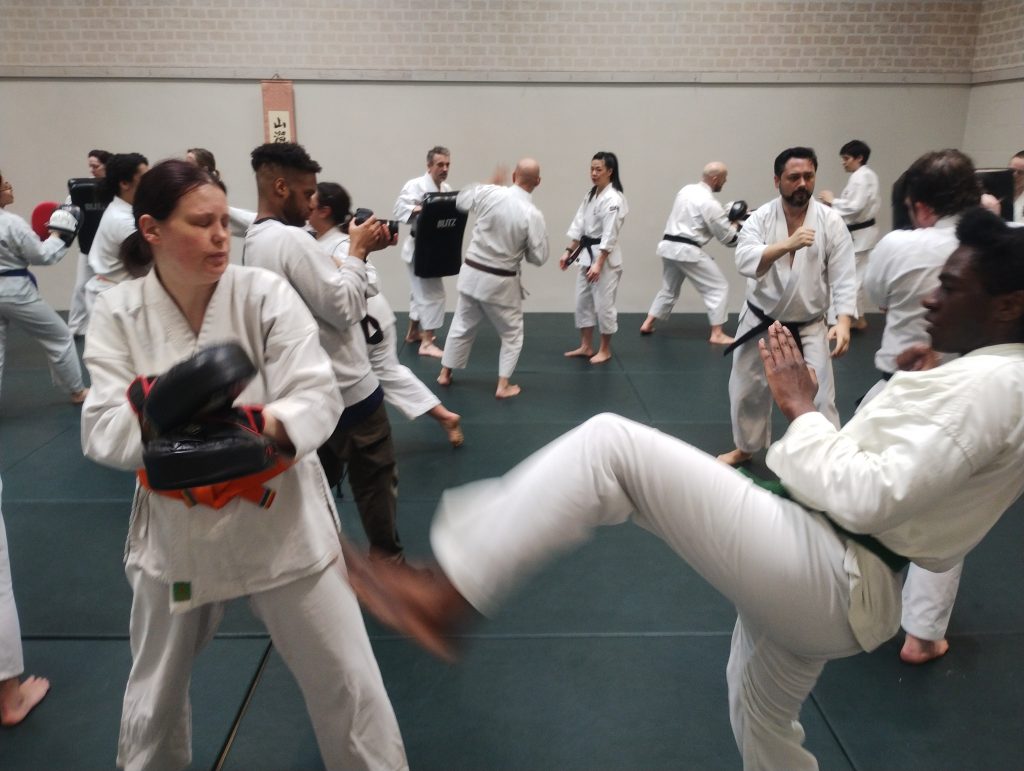
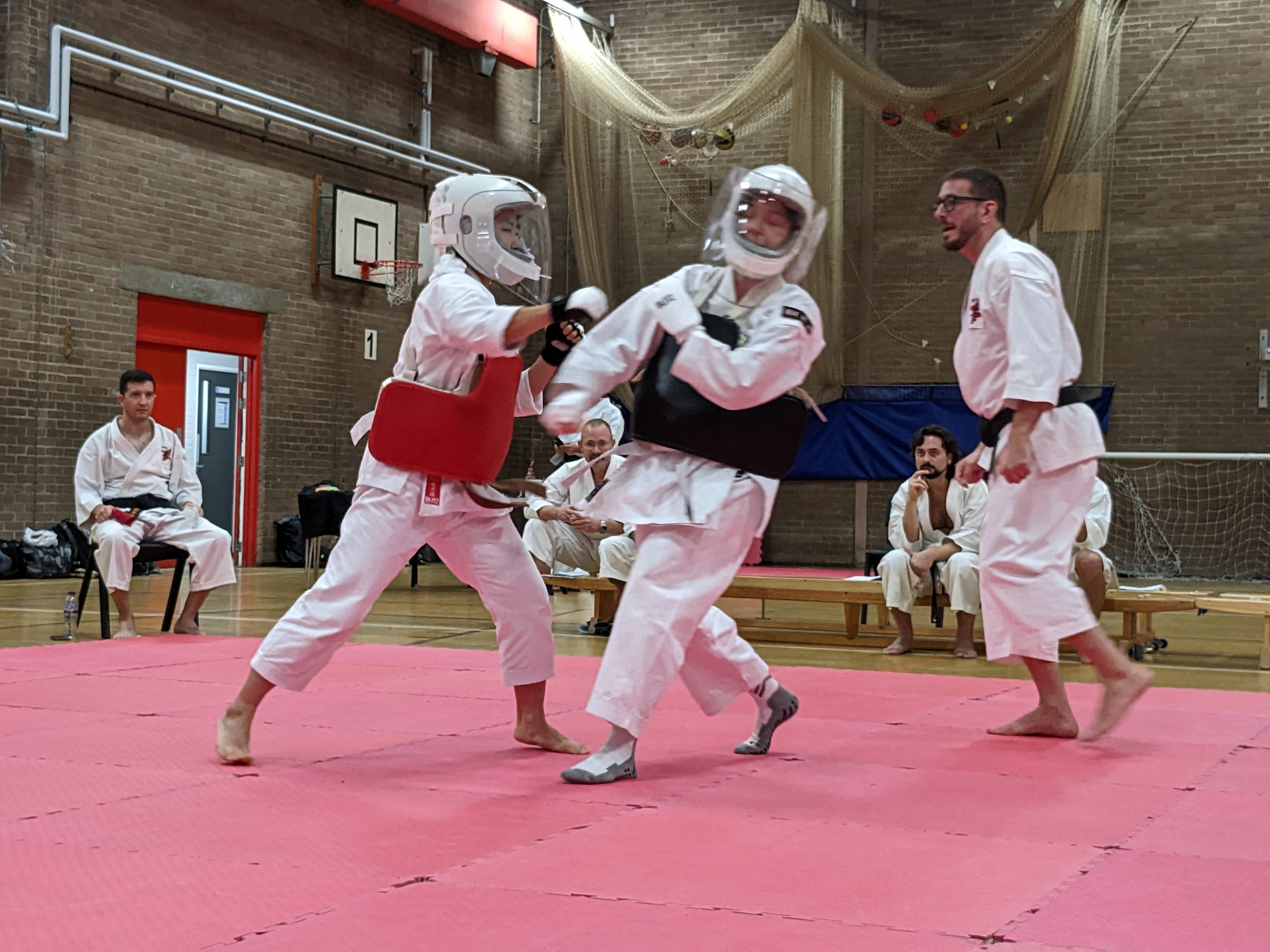
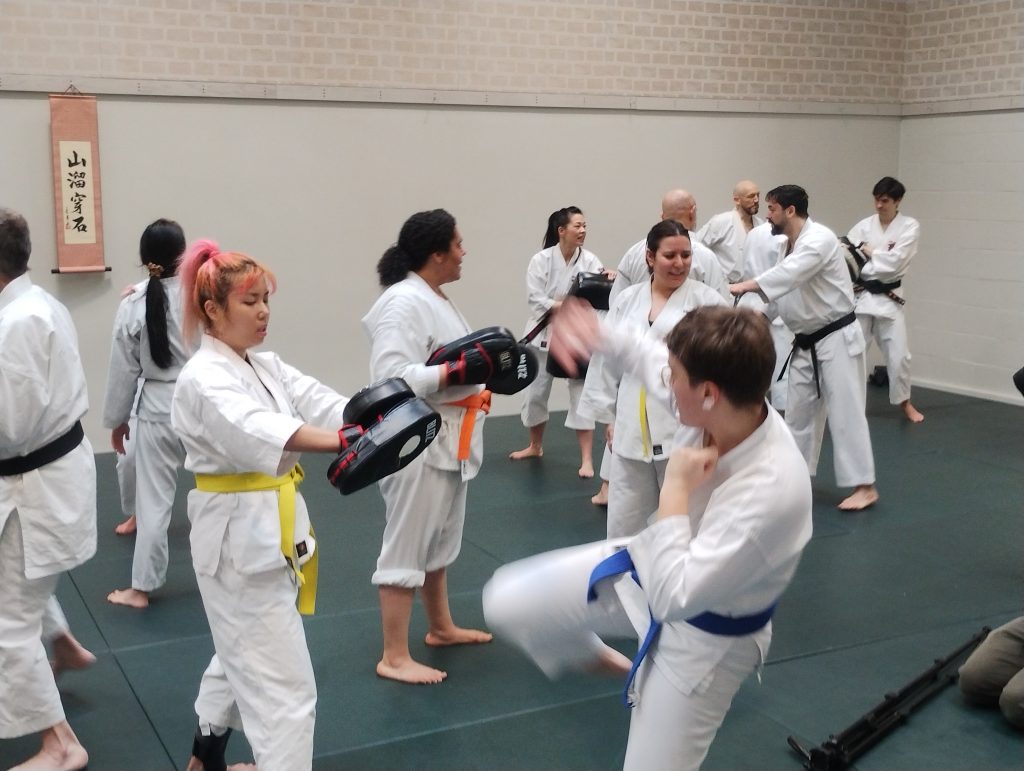
Protective Gear
Safety is key! Make sure you have the right equipment for randori. Check out our protective gear recommendations.
Ready to test your skills and push your limits? Come experience randori in its Camden form—fun, challenging, and full of personal breakthroughs!
Randori Strategy – The Slayer’s Combat Method Meets Jeet Kune Do
Read this far? Let’s have some fun. Buffy Summers didn’t survive seven seasons of demon-slaying by brute force alone—she mastered strategy, adaptability, and instinctive combat, much like Bruce Lee’s Jeet Kune Do (截拳道) approach to sparring. When applied to randori in Shorinji Kempo, these attack methods help Kenshi refine their sparring intelligence, ensuring every move is deliberate, adaptable, and effective.
Attack by Combination – The Buffy Beatdown (ABC)
Buffy never relies on a single strike—her fights flow in sequences of chained attacks and counters. In Goho Randori (剛法乱取り), Kenshi should use structured combinations to overwhelm an opponent’s defence, maintaining control with well-timed punches, kicks, and intercepting strikes.
Attack by Drawing – Angel’s Shadow Play (ABD)
Angel rarely strikes first—he lures the enemy into attacking, then counters decisively. This method mirrors Juho Randori (柔法乱取り), where Kenshi set up an intentional opening, baiting an opponent into grabbing or committing—only to redirect their force and apply locks, escapes, or reversals.
Single Direct Attack – The Spike Special (SDA)
Spike fights with ruthless efficiency—sharp, fast, and direct movements. In randori, this means well-timed, powerful single strikes, such as a gyaku-zuki (back hand punch) or a precise shuto-uchi (knife-hand strike), exploiting openings instantly. Speed and accuracy ensure success.
Passive Direct Attack – Giles’ Tactical Defence (PDA)
Unlike Buffy or Spike, Giles fights smart—he lets the opponent commit first, then counters effortlessly. This approach aligns with Juho Randori, where instead of engaging head-on, Kenshi intercept, control, and neutralise the attack, using locks and defensive techniques rather than brute force.
Attack by Tracking – Willow’s Precision Magic (ABT)
Willow never casts spells wildly—she adjusts to her opponent’s movement in real-time. In randori, this means tracking an opponent’s movements, cutting off their escape routes, and maintaining control. Footwork, positioning, and constant adjustments ensure techniques remain effective under dynamic conditions.
Spar smart, adapt fast, and always fight like a Slayer—with the efficiency of Bruce Lee!
Like fighting vampires, randori isn’t about reckless aggression—it’s about reading your opponent, controlling the fight, and adapting with every exchange. Whether striking, baiting, or countering, Kenshi should train with intelligence, precision, and the readiness to evolve in combat.

